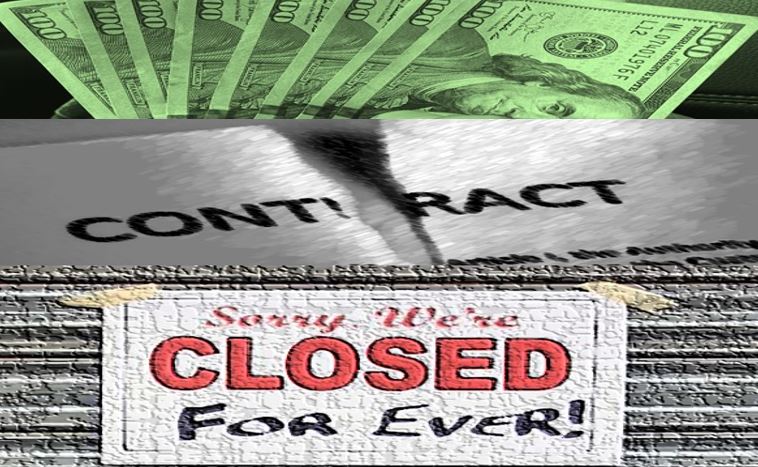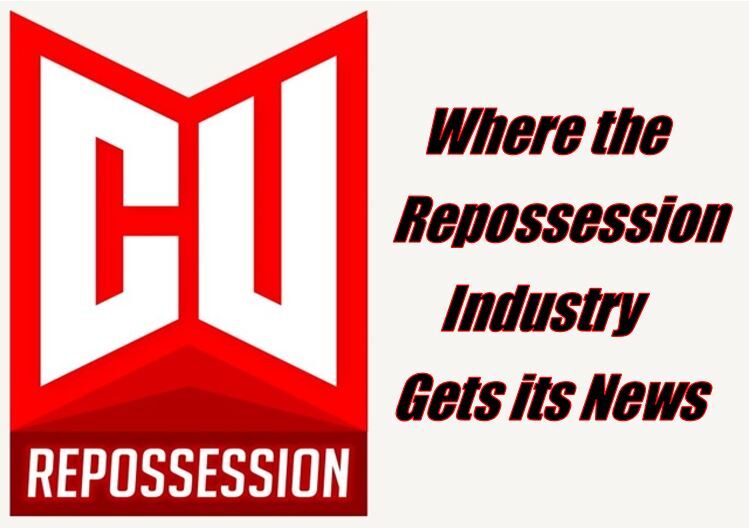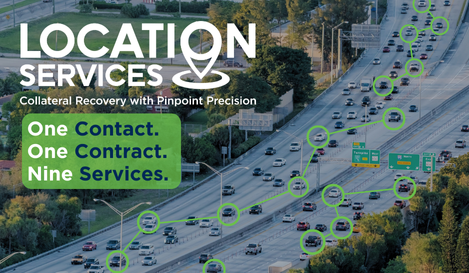
The current momentum at which the industry is moving toward desperation is real!
“We must be aware that momentum born of old habits and destructive behaviors might be momentum, but it’s momentum slammed into reverse.”
Craig D. Lounsbrough
GUEST EDITORIAL
I wrote several articles a couple years ago with the intentions of adding different viewpoints about the more troubling areas of the industry. Much of it was self-discovery and reassurance that the plan we were going to work toward as a business was the correct way to be heading. It seemed our industry was making clear progress prior to COVID. ARA and TFA merged to combine efforts around making a difference. There was focus on education, safety, legislation, and more. Personally, I felt good about the direction we were headed.
The frustration prior to that period seems to have returned and the momentum we had appears lost.
Clients (brokers of all types especially since they control such a large market share) should consider the disastrous positions they are putting themselves in. What happens when only 50 companies survive across the US (Anyone else turn down that offer a 2 or so years ago? How is your business today?). Intentional or not, who ends up with the leverage then? Will lienholders just price losses into their upfront cost? You cannot frontload 100% loss (Can the retail theft increase in CA provide insight here?).
Owners should run the math sooner rather than later and there is no way that clients do not understand it better than they acknowledge (they have departments of people who are good at math.)
This is very basic, but it will clearly demonstrate how a single undervalued contract can destroy your business. Especially a volume-based contract.
Add all your cost for payments, rent, insurance, employees x40 hours x minimum wage x 4.3 wks. + comp + taxes for monthly fixed payroll (overtime is flex for us). Average your monthly fuel, bills (phone, electric, water), overtime/bonuses, owner payroll and add that to your fixed. Divide by your average recoveries
We will be using 450 as our starting monthly number (just a fraction over 100 units per week) for recoveries and $120,000 in costs (these relatively close to numbers I have ran in the past at different times.)
These are averages. It’s a goal post to judge profits against. Tracking flex numbers like payroll and fuel per recovery on a weekly basis is highly recommended to zero to a more accurate number.
Always go about your math the same way and you will get a solid idea from month to month. Graphing in Excel or the like can show you trends, etc.
**Hint – Use the desired income number instead of the actual income number for owner payroll if you’re not making what you want or intended. This will show you where your rates need to be.
Total cost = $120,000 / 450 = $267 Per Unit – $267 is your minimum receivable (not billable, not all line items are paid) average for any client.
**Hint – Want to make 30% profits, add 30% to the $267 ($347 is your number).
Remember, you need cash coffers to handle emergencies, keep you flush during the ebbs and flows of volumes (your running 30 to 60 net on receivables against weekly expenses in most cases), so consider that when deciding what you need to set your mark at. Below 10 to 15% may cause issues unless you have personal income to tap into when needed.
Now, you have 3 ways of impacting this number.
1 – DIVISOR – Pull more units without raising costs, especially flex (hard to do when the volume is low – remember Pat Altes Podcast from Jan 13th, delinquencies are at an all-time low for many lenders (and we are coming into tax season). Altes, JP (Host). (2022, 01 13). BOYCOTT! DRN’s Jeremiah Wheeler’s Thoughts on the Great LPR Shutdown. Repo America with J. Patrick Altes. https://podcasts.apple.com/us/podcast/boycott-drns-jeremiah-wheelers-thoughts-on-the-great/id1504301559?i=1000547812226
2 – COST – Lower your cost (sell trucks, close offices, cut down on payroll by working your own lots). Watch flex cost closely.
3 – INCOME – Increase receivables (obvious, ask for increases, find new revenue streams, or increase the ever-decreasing ancillary).
Let’s focus on the divisor (number of units). Let’s increase our recoveries by just 10 units per week (@ 4.3 wks. avg. per month that is 43 additional units).
Total Cost = $120,000 / 493 = $244 Per Unit – That’s a $23 per unit increase.
Here is where you will lose everything in a quickness if you do not cut your loosing contracts!
Now, let’s say your costs remained roughly the same and your pulling 9.5% less units (using the same 450 we subtract 43.)
Total Cost = $120,000 / 407 = $295 – That’s a $32 per unit loss.
That’s $9 more on the loss side with the same swing to the negative (I will let you explore why.)
Remember, you must figure receivables, not what you billed – look at deposits and minus impound fees.
Take your total deposits and divide by the average number of recoveries. Look each month for a year and then get an average for the year. This will show a good sampling and help with understanding the income lag.
There are months when payments from clients come to a crawl. Large payments then come in a month or so later. This can cause small data samples to hide the truth if you’re sampling on a peak or valley month. You’re looking for the mid or mean, just use the same one every time.
Once you have your global average, breaking income down by client is the only way to truly understand what you are averaging for that client (it does not show labor involved in fighting denials, complicated service expectations, etc., but it’s a start). Depending on how you keep up with income this may be more of a challenge than not.
Is your deposit average higher than your needed or target average?
After a certain point, the momentum to the downside gets faster and faster for every car you pick up at a loss. Now, add the extra insurance exposure, storage costs, claims, 3rd party management costs (auctions, transporters, customers, etc.) for every looser you recover, and watch these recoveries crush your business faster than you can cancel your insurance.
If the contract is lower than your average, then it’s real trouble. If it is lower than your desired target, then every loser takes you further away from your goal.
Every expense item your company has will increase on average as volume goes down and for every “recovery you pick up” at a loss, it compounds the issue.
Normal times meant normal attrition. Companies close as new ones grow. Times are not normal. Add quick inflation, supply chain issues, a resigning workforce where workers are demanding higher pay (hmm, correlation, you decide), and LOW VOLUME on top of 10- to 15-year-old rates and normal just got canceled!
I do think this is the basis for the major frustrations field service company owners have right now. There simply is not any more time for most of the companies out there. It’s; get the increase, cut the contract, or close the doors.
The other miss out there right now is around LPR. The additional expenses invested into LPR depend greatly on that capital paying off by increasing the number recoveries. You’re doubling your hourly payroll, adding about 1/3 to your capital equipment cost, and increasing risk exposure when implementing purposeful scanning programs.
Because the expense is increased, the divisor must be larger than normal to be profitable against a normal rate. Clients are reducing these rates which makes the issue worse. Companies that were profitable using this model two years ago are incurring losses at tremendous rates because of the increased costs against reduction in volume on lower priced contracts, the missing ancillary, and inflation.
Now it’s not hard to see why it is painful to know that the data you invested is not only being given to your competitor without any meaningful compensation but is increasing their billable volume while you’re struggling to make your bottom numbers. It is a big issue and Vinnie in his podcast with Patrick Altes has a point when he speaks about diluting the value with the way in which the data is now being marketed. Altes, JP (Host). (2022, 01 20). BOYCOTT! Why A Major Florida LPR Scanner Is Shutting Off His Cameras, w/Vinnie Payne. Repo America with J. Patrick Altes.
LPR providers are unintentionally encouraging companies not to invest by diluting the value of the data. Why scan when I am going to benefit for free?
We had the conversation a few years ago after buying 4 brand new cars and equipping them with new camera systems. Gross receivables went up and profits went down. We haven’t run cars since, but we still have cameras on our trucks – it just didn’t make sense to pass up the opportunity.
We will have to turn those off if all the related contracts indicate a net negative as demonstrated above (most brokers price the LPR below normal rates and things are already moving in the wrong direction.)
Proudly, we are a DRN provider. I have a lot of respect for the way DRN, Motorola (thanks for keeping me connected in my public service days), MV TRAC and Jeremiah have supported field service companies. However, I do believe that the previous information supports the idea that the decisions on how the data is marketed and the lack of thought to downstream impacts along with brokering the relationship between the field service company and forwarder lined up the crosshairs on LPR and DRN more specifically, not the field service company. Altes, JP (Host). (2022, 01 13). BOYCOTT! DRN’s Jeremiah Wheeler’s Thoughts on the Great LPR Shutdown. Repo America with J. Patrick Altes.
Owners are only pulling back the curtains!
Once brokers became your primary revenue stream (no matter their industry), we became closer partners than you realized.
Rates from all recovery programs (voluntary, involuntary, LPR, etc.) must meet target for every recovery or the program/client may not have any participants/vendors by attrition (companies closing, understanding profits, or just avoiding poor programs altogether.)
It’s just math.
Not emotion nor demand, just business and as owners we must get better at it.
A couple final thoughts.
1 – Add the 2020 inflation rate and then the current inflation rate to your average deposits before COVID. This is the minimum you need to be at now to get close to the same amount of profit for 2019.
2 – There have been several conversations about “collusion,” “price fixing,” etc. as of late. Math is math and the fact that everyone is facing similar circumstances at the same time should not be a surprise for anyone and frightening people away from the conversation is just bullyish.
3 – If you’re not doing the work, your competition is and the more work they have at a loss, the tougher it will be for them to remain competition.
4 – Working together to educate and train one another is not “price fixing or colluding” no more than me sharing the above information is.
Hope it helps someone, but if not, it was a good reminder for me. Need help with the concepts or data, give me a yell.
Regards!
Wes Carico,
Owner – Nostalgic Towing










Facebook Comments